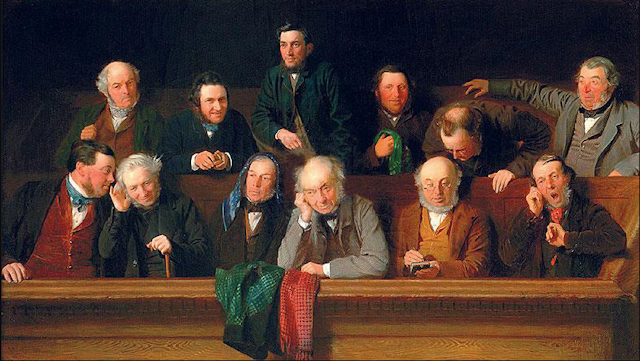A microcosm of society, the jury room has always fascinated people: a variety of individuals from different backgrounds all working together to make a judgement on the fate of an individual.
These judgements are some of the biggest decisions a person will face in their lifetime, and can have serious consequences for both individuals on trial (such as when someone is wrongly imprisoned) and society (where the legal system fails to rehabilitate, deter or incarcerate guilty individuals).
Part of the fascination of juror decision-making relates to human fallibility, and the prejudices and biases that can have an impact on a verdict. Films such as 1957’s Twelve Angry Men – where one man systematically dismantles the biases and assumptions of his fellow jurors – dramatically introduced this idea to popular culture.
Decision scientists (like myself), legal scholars and forensic psychologists investigate juror decision processes and biases for two reasons: first to help reduce the number of inaccurate judgements that are made, and second, to make sure defendants are given a fair trial that is not blighted by bias. These two reasons may seem harmonious, but an accurate outcome (when a guilty defendant is given a guilty verdict) can be reached unfairly, and an inaccurate outcome (when a guilty defendant is given a not guilty verdict) can be reached fairly because of a lack of evidence.
Bias and background
Juror decision-making research investigates how individual jurors evaluate information and examines their pre-trial biases and the cognitive mechanisms behind the verdicts they reach. But jury decision-making research is more interested in the deliberation room, and the social processes that allow a verdict to be reached.
It is important to first investigate how individuals reach their verdict preferences before looking at social processes – in a similar manner to how biologists look at the effects of cancer on cells, before they investigate the effects of cancer on organs.
Previous juror decision-making research has shown that a number of variables can have an impact on the verdict reached by a juror. For instance, factors such as race, gender and the socioeconomic status of the defendant can all have a biasing effect on decision-making. However, what if the actual process of making a decision is inherently biased? And that demographic differences relating to individuals involved in the case only exaggerate these biases?
New Research
Our research has shown that the mere process of making a decision can produce a bias. Over a series of experiments, we showed that sometimes jurors do not use all the information available to make a decision. We showed that verdicts favoured before all the information has been shown can lead to confirmation bias and pre-decisional distortion.
Confirmation bias is when decision makers see evidence that chimes with their beliefs in a positive manner, and ignore evidence that does not; pre-decisional distortion is when the decision maker twists how they view a piece of evidence so that it aligns with their preconceived beliefs and expectations.
Our research has shown that jurors initially integrate information, encompassing both prosecution and defence evidence within their decision making. However, through integrating information, some jurors seem to reach a point (or a threshold) that allows them to have a pre-decisional preference in relation to the verdicts (that is, a leading verdict). This leading verdict can be dangerous, as it is the first time that the juror is able to develop a belief regarding the guilt of the suspect.
In the course of a trial, the formation of this belief is then challenged by competing beliefs. So, for example, a juror may initially favour the guilty verdict, then hear evidence from the defence that may make them reconsider their position. To to make it easier for jurors to decide on which verdict to choose, our research suggest that some jurors disregard and distort evidence that does not confirm their own beliefs, thus allowing the leading verdict to be favoured.
The way forward
These results have a number of implications in relation to the courtroom. First, the legal system should give a warning to jurors of the effects of pre-decisional preferences, as previous research suggests that a warning of pre-decisional distortion can reduce the effects of cognitive biases. Second, future research should investigate the effects of decision aids (tools that help individuals come to a decision) in reducing biases.
For example, “a route to verdict” is a method of presenting jurors with a sequence of questions aimed at allowing them to justify their verdict in a legal manner. Structured decision aids like this have been shown to increase a jurors’ ability to legally test the evidence presented to them. They could help persuade jurors to be critical of leading verdicts, thus decreasing instances of pre-decisional bias. However, the effects of these decision aids need to be tested.

Juror decision-making research has one huge flaw: legal scholars are not allowed access to the jurors during a trial. So what we know about jurors is based upon mock juror simulations, and may not necessarily extend to a real courtroom. But there are two ways juror research could go forward. First, the legal system could allow decision scientists access to the deliberation room, so that the juror decision process can be analysed. Second, more interdisciplinary research between lawyers and decision scientists should take place.
As the first option is unlikely, it seems that the second is the most viable. More cross talk between individuals who are experts in how people make decisions and experts in law should make juror experiments more realistic, and would provide researchers with more of an insight into the decision-making processes and biases of jurors.
This kind of interdisciplinary research would have a positive effect on the legal system as the courts would learn how to reduce bias through experimentation and research, which would help them deliver justice more fairly.

